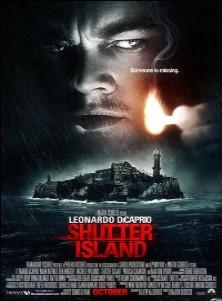In Martin Scorsese’s 2010 psychological thriller “Shutter Island,” the interplay of dreams and memory serves as a complex tapestry that shapes the narrative and character development. As viewers navigate the labyrinthine plot alongside U.S. Marshal Teddy Daniels, they encounter a vivid exploration of the human psyche, where dreams and memories blur the boundaries between reality and illusion. This article delves into the intricate role these elements play in the film, examining how they influence perception, drive the storyline, and ultimately reveal deeper truths about identity and trauma. Through an analytical lens, we will unravel the psychological underpinnings that make “Shutter Island” a compelling study of the mind’s capacity to distort and protect.
Dreams as a Reflection of Trauma and Subconscious Mind
In “Shutter Island,” dreams serve as a profound window into the trauma and subconscious of the protagonist, Teddy Daniels. His vivid and often disturbing dreams are not merely random sequences but a complex interplay of repressed memories and unresolved emotions. Through these nocturnal visions, viewers gain insight into Teddy’s past, particularly his experiences during World War II and the tragic loss of his family. These dreams manifest as both haunting reminders and cryptic symbols, offering clues to his psychological state.
- Repressed Memories: Teddy’s dreams are laden with elements of his past that he struggles to confront. They blur the line between reality and illusion, pushing him to face truths he’s long buried.
- Symbolic Imagery: The use of water, fire, and recurring characters in his dreams reflect deeper themes of guilt, loss, and denial. These symbols are not just artistic choices but are deeply rooted in his psyche.
By dissecting these dream sequences, the film illustrates how the subconscious mind attempts to process and make sense of trauma. This exploration underscores the narrative’s psychological depth, challenging viewers to question the nature of memory and reality.
Memory Distortion and Its Impact on Perception
Memory plays a pivotal role in shaping our perception, often blurring the lines between reality and illusion. In “Shutter Island,” this distortion becomes a central theme, illustrating how memories can be manipulated and misinterpreted. Dream sequences and flashbacks serve as tools to explore the protagonist’s fractured psyche, providing glimpses into his past while simultaneously questioning their authenticity. The interplay between memory and perception raises critical questions about the reliability of one’s own mind.
Several factors contribute to this distortion:
- Emotional Trauma: Intense emotions can warp memories, leading to selective recollection.
- Repression: Painful memories may be suppressed, only to resurface in altered forms.
- Confabulation: The mind fills in gaps with fabricated details, creating a false narrative.
Through its intricate narrative, “Shutter Island” highlights how these distortions impact not only individual perception but also interpersonal relationships, ultimately questioning the very nature of truth and reality.

Analyzing the Psychological Mechanisms of Delusion
In Shutter Island, the intricate psychological tapestry of delusion is woven through the interplay of dreams and memory. The protagonist, Teddy Daniels, experiences vivid dreams that blur the lines between reality and imagination, serving as a mechanism for his mind to process trauma. These dreams are not mere figments but are imbued with symbolic representations of his subconscious conflicts. As Teddy navigates these dreamscapes, viewers witness the unfolding of his suppressed memories, which gradually reveal the profound impact of his past on his present psyche.
- Memory Fragmentation: Teddy’s memories are disjointed, reflecting his mind’s struggle to maintain coherence amidst chaos.
- Dream Symbolism: The dreams contain potent symbols, such as water and fire, that encapsulate Teddy’s guilt and desire for redemption.
- Reality Distortion: His inability to distinguish between dream and reality highlights the depth of his delusion, creating a protective yet deceptive mental state.
These psychological mechanisms are pivotal in illustrating how the mind constructs alternate realities to shield itself from unbearable truths. The film’s exploration of these themes provides a profound commentary on the nature of human consciousness and the fragility of perceived reality.

Therapeutic Implications and Interpretative Approaches
The intricate interplay between dreams and memory in ”Shutter Island” offers a profound exploration of therapeutic techniques and interpretative strategies. The film delves into the subconscious mind, where dreams serve as both a refuge and a labyrinth for the protagonist, Teddy Daniels. In therapeutic settings, dreams can be employed to access repressed emotions and unresolved trauma. For Teddy, dreams are a manifestation of his inner turmoil, providing clues to his fractured identity and unresolved past. This aligns with psychoanalytic therapy, where dreams are interpreted to unlock deeper psychological insights.
- Symbolism in Dreams: The recurring motifs and symbols in Teddy’s dreams can be analyzed to uncover hidden fears and desires.
- Memory Reconstruction: By examining Teddy’s fragmented memories, therapists can explore the concept of false memories and their impact on reality perception.
- Cognitive Dissonance: Understanding Teddy’s struggle between his constructed reality and the truth highlights the therapeutic importance of addressing cognitive dissonance.
Furthermore, the film’s portrayal of memory as both malleable and deceptive underscores the necessity for careful interpretative approaches in therapy. Cognitive Behavioral Therapy (CBT), for instance, can be utilized to challenge and reframe distorted memories, guiding patients like Teddy toward a more coherent understanding of their experiences. Ultimately, “Shutter Island” presents a compelling case for the integration of dream analysis and memory exploration in psychological treatment, emphasizing the potential for healing through introspection and reinterpretation.































